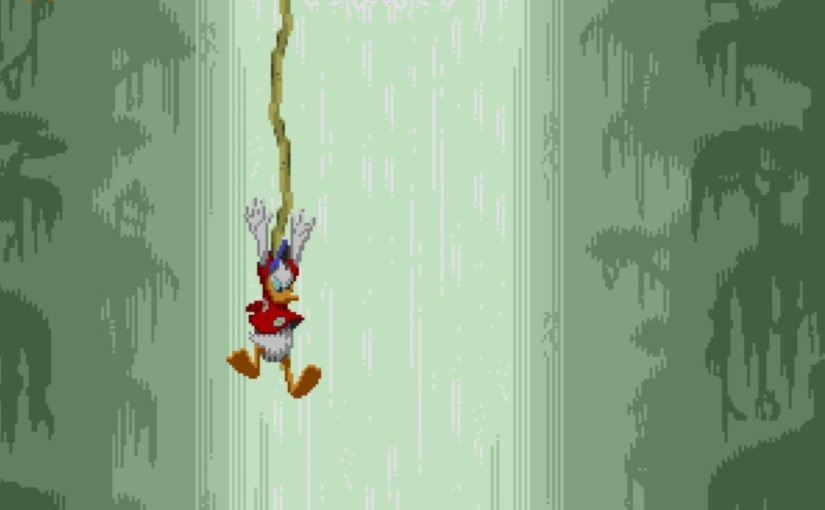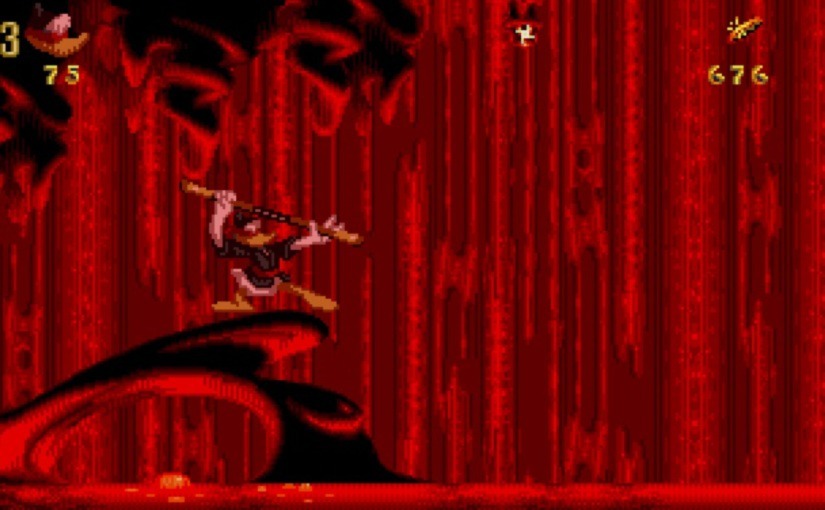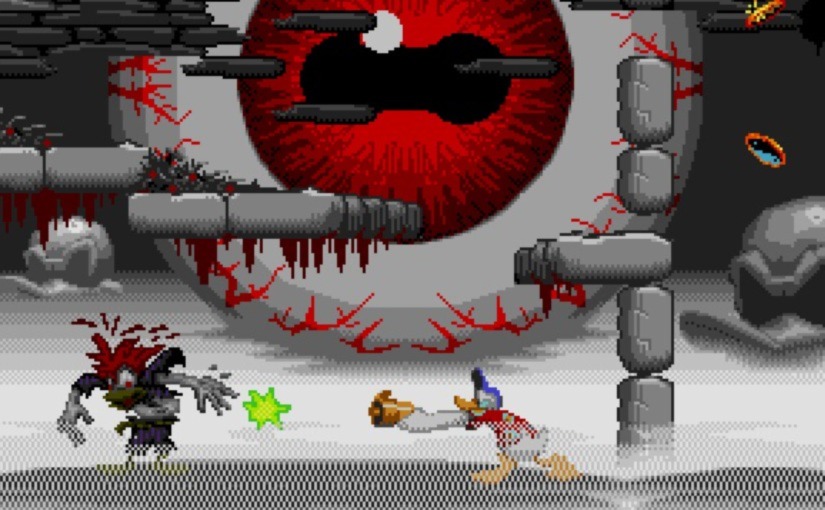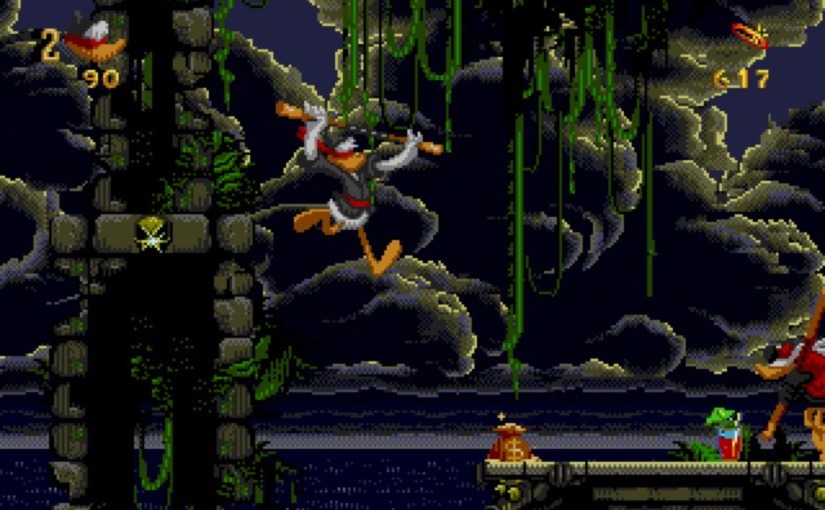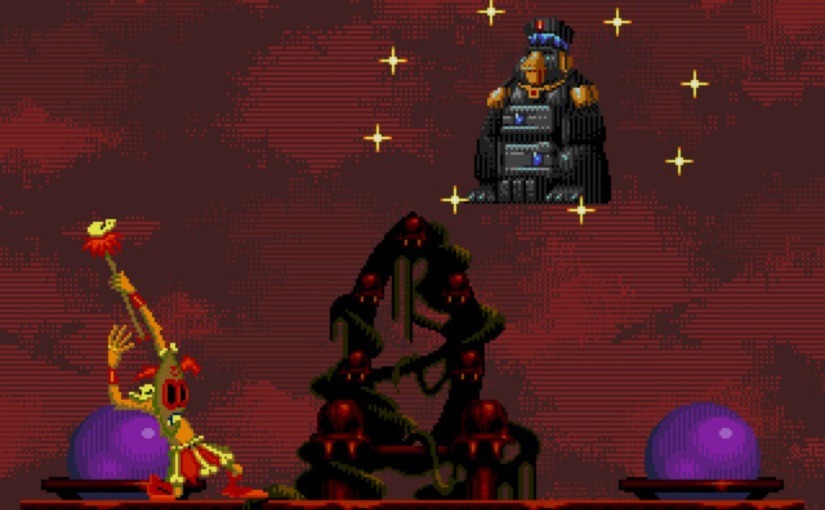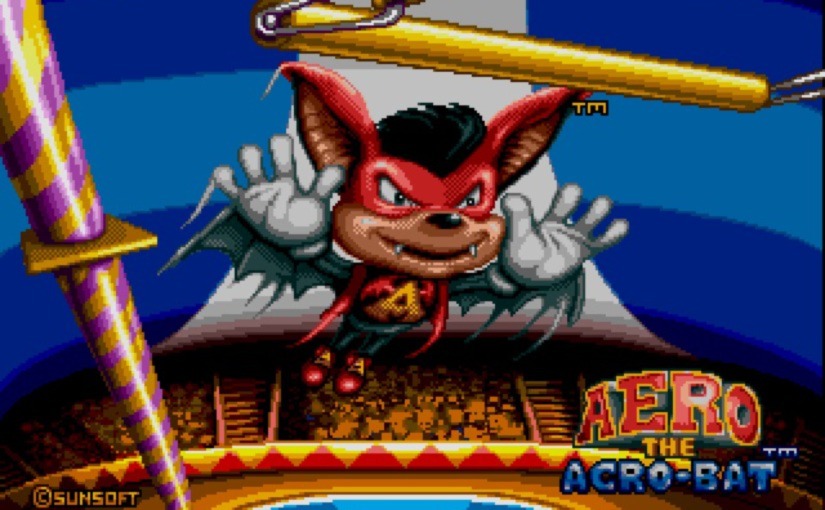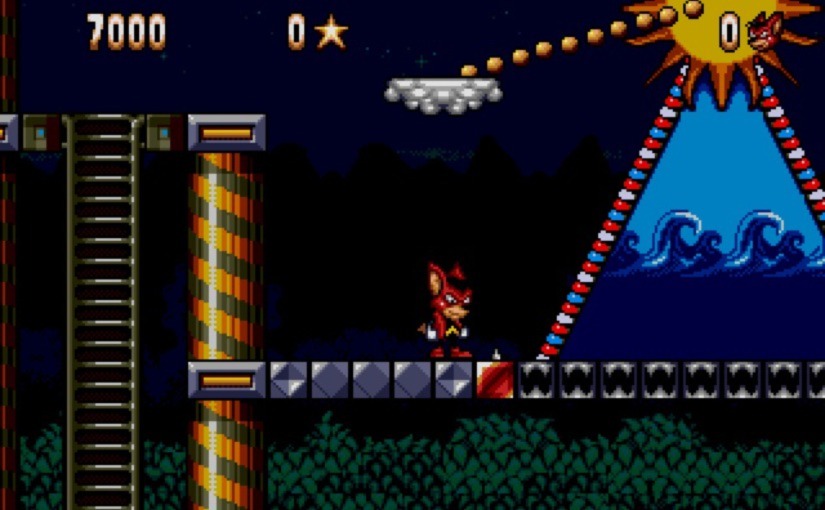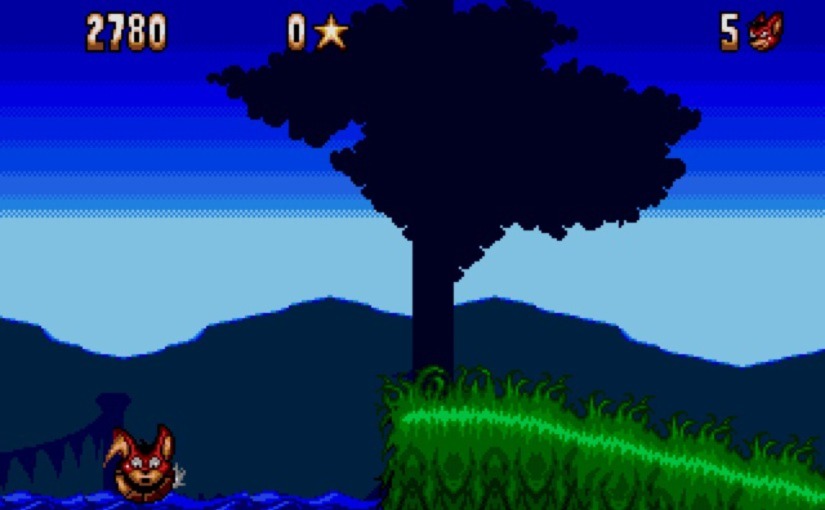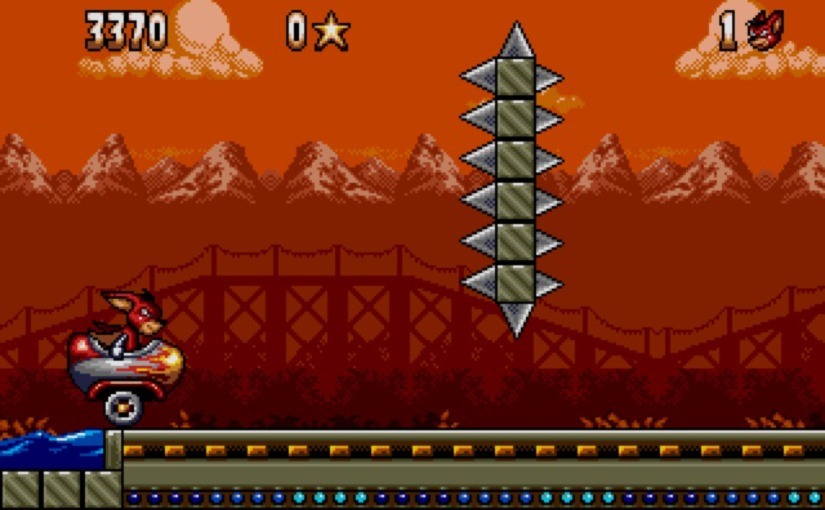Battle of the Ninja
Sometime in the last couple of years, the planets aligned on the same night that a full moon cast an eerie light over the bamboo forests at the base of Mount Fuji, and two separate studios came up with the idea of resurrecting a classic 2D ninja franchise for modern consoles at the same time. Lizardcube dragged Joe Musashi out of the shadows with the Sega-published Shinobi: Art of Vengeance, and The Game Kitchen shone a spotlight on Ryu Hayabusa, creating the Koei Tecmo and Dotemu-published Ninja Gaiden: Ragebound. Well, kind of. Ryu Hayabusa is in the game, but he’s not playable.
Ninja Gaiden: Ragebound came out first, but Shinobi: Art of Vengeance was the first one to get a physical release, so it was the first one I played. I was going to buy them both on Switch, but the boxed release of Shinobi was a code-in-a-box, which I soundly rejected as everyone should, so I got that one on PS5. Still, I played Ninja Gaiden: Ragebound docked on my Switch 2, and didn’t notice any particular performance issues in either game, so I think it’s still a fair fight. As such, it’s time for me to figure out which 2D ninja action game is the best, and I do this as a fan of both franchises who is old enough to have played both back when they were first released. No ninja favouritism from me!
I’m going to use the most coveted and respected review setup of all, that being the method adopted by premier 90’s periodical, Mean Machines Sega. As such, we’ll be judging each title on the following aspects; Presentation, Graphics, Sound, Playability, Lastability, and Overall. Make sense? No, not to me either, but we’ll get into that shortly, so get your tabi on and bring your kunai, it’s time to take to the shadows.
Presentation
So, what’s the difference between presentation and graphics/sound, then? I guess I’m just not on the level of those fabled Mean Machines Sega writers of old, because I don’t really get it. I’ll tell you what, I’ll use this section to talk about each title’s story setup instead. That’s kind of like presentation.
Shinobi: Art of Vengeance’s story is pretty basic, with a fairly unremarkable bad guy who is leading an enormous and incredibly well-equipped army of soldiers, creatures, and demons on a steamroller journey of world domination. The bad guy, known as Lord Ruse, has somehow cheated Death (yes, the Death) out of his scythe, and so wields incredible power. Ruse’s forces hit Musashi’s village early on and burn the whole place to the ground, murdering everyone except Joe and Joe’s pregnant wife. Mr. Musashi is obviously fairly pissed, and goes on his own rampage with vengeance on his mind.
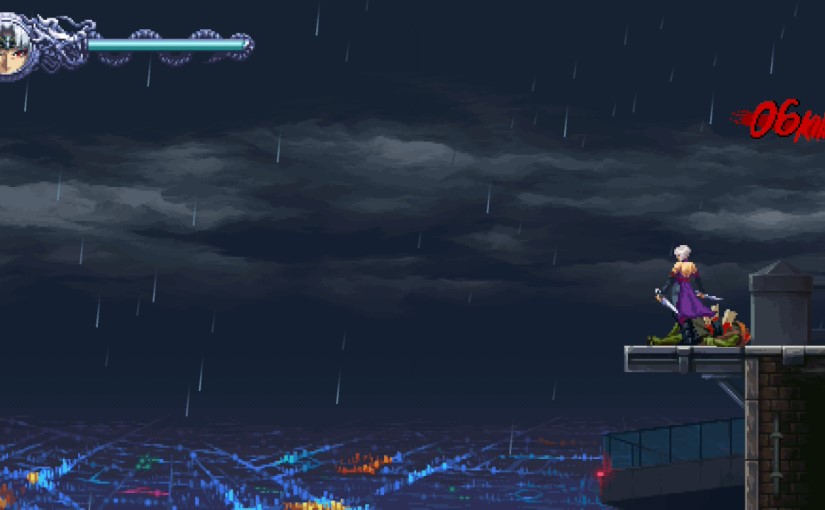
Ninja Gaiden: Ragebound has an interesting story hook in which main character, Kenji of the Hayabusa Clan, ends up becoming a vessel for the soul of Kumori, an equally skilled kunoichi aligned with the shady Black Spider Clan. The two must work together to defeat the minions of a powerful fiend who plans to open the veil into the human world and wreak havoc. The bad guys feel less important than those of Shinobi: The Art of Vengeance, but the relationship between Kenji and Kumori is actually pretty fun to see develop, and the game’s finale wraps up their story in a surprising way, so I think this one takes it.
Winner: Ninja Gaiden: Ragebound
Graphics
Shinobi: Art of Vengeance goes for that playing-a-comic art-style that Lizardcube had previously used for Streets of Rage 4. It looked great for that game, and it looks great here, and most of the enemy designs are very memorable (I especially like the big guys with the electric gauntlet weapons).
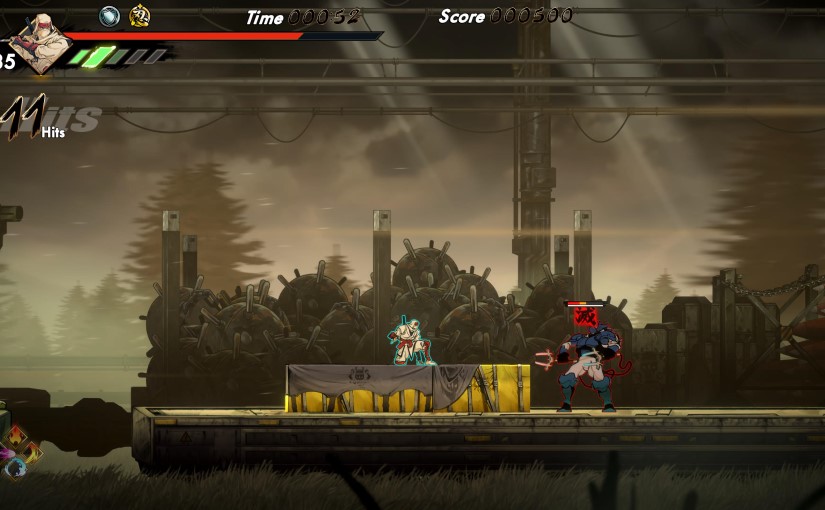
The backgrounds can be spectacular, with highlights including the sparkling lantern festival, the gorgeous fields that the game starts in, and the rooftops of the night-time city stage. Where Shinobi: Art of Vengeance really excels though is in its animation. Joe’s movements are incredibly fluid and the battles look spectacular, and this helps you feel super cool and badass when you pull off spectacular moves while managing to avoid damage.
Do the visuals lose some personality and authenticity with the move away from pixel art, though? Possibly, and occasionally it feels like the backgrounds lack detail, but it’s a superb-looking game overall nonetheless.
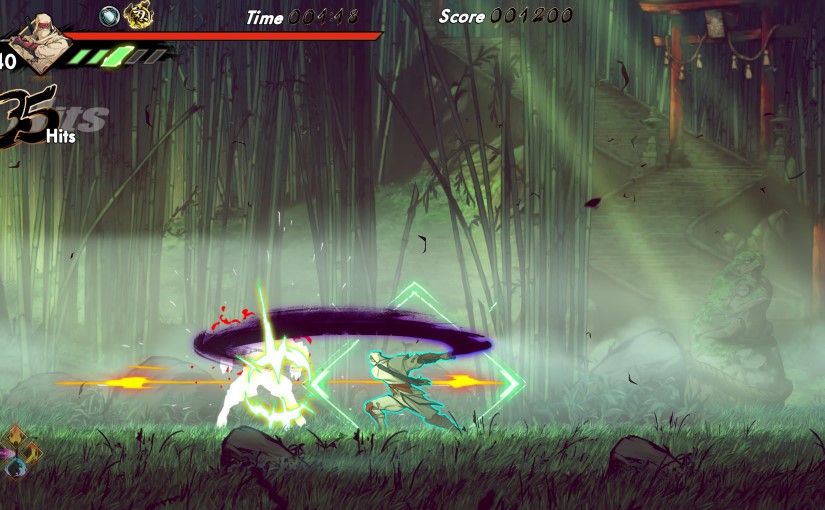
Ninja Gaiden: Ragebound has more of a retro feel, opting for the familiar pixel art style. This looks great, although perhaps not as striking as Shinobi. Some of the backgrounds look awesome, especially the early-game bamboo forest and the areas in and around Mount Fuji. However, there were locations that I thought were a little bland with uninteresting colour palettes, especially the stage that’s a big construction area. I also found that Keni’s arms looked cartoonishly huge when he was holding onto the ceiling or hanging off a helicopter. Both he and Kumori’s sprites are gorgeous, though.
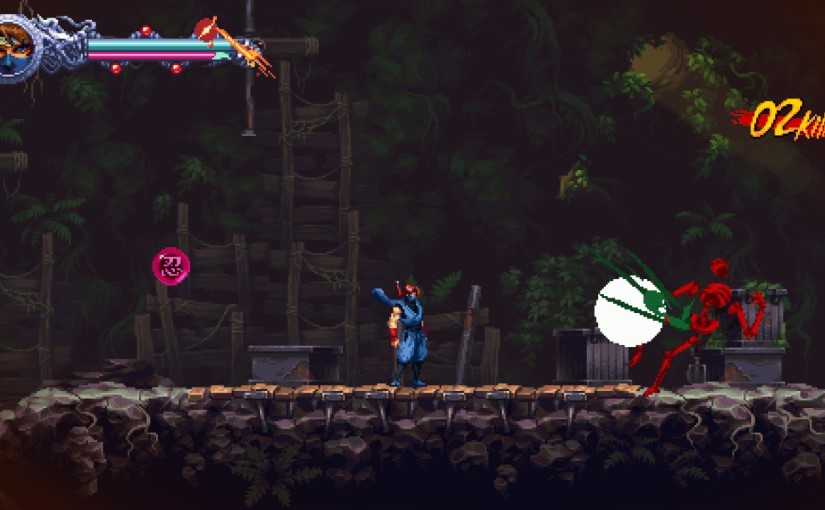
Interestingly, both games have a couple of levels and a sub-section of enemies based around body horror themes, and both of them kind of fall flat when it comes to making it, well, gross enough. You know, that sort of stuff should send shivers down your spine, leave you morbidly fascinated and unable to look away despite the soul-clenching nature of what you’re seeing. For an example, look at Shinobi III: Return of the Ninja Master and its Hydra boss fight, as well as the stage that proceeds it. Shinobi: Art of Vengeance’s gribblies look too clean and sleek thanks to the art style. Ninja Gaiden: Ragebound’s pixel art style gives the twisted horrors a bit more of a visceral nature, but they still look a bit too cartoony to be effective, even the monstrosity fought at the end of the train stage. Disappointing.
Honestly, there were times during Shinobi: Art of Vengeance where I found myself wishing it went for a pixel art style (especially in the underground laboratory level), but I think that it looks better overall. Both games look great, but Shinobi: Art of Vengeance has that extra edge. Lizarcube are winning this one, but it’s darned close.
Winner: Shinobi: Art of Vengeance
Sound
While both games sound good, and both games have great, appropriately action-packed soundtracks, only Shinobi: Art of Vengeance had any pieces that I remembered after I’d finished the game. They were the track that plays during the “Ankou Rift” sections, and the battle music from the Lantern Festival stage, if anyone is interested.
Winner: Shinobi: Art of Vengeance
Playability
Here we go, the meat and potatoes of any ninja game, or should that be the rice and tofu? Let’s get one thing cleared up straight away; Ninja Gaiden: Ragebound is harder. I beat most bosses in Shinobi: Art of Vengeance on my second try, and didn’t have any real trouble until the very last showdown with Lord Ruse himself. The first boss in Ninja Gaiden: Ragebound (a giant fire bat monster demon guy) took me numerous retries, and things only got more challenging. It never felt insurmountable, though, and I persevered and finished the game in the end. Incidentally, Shadow of the Ninja – Reborn (click here for my review), is harder than either of these games.
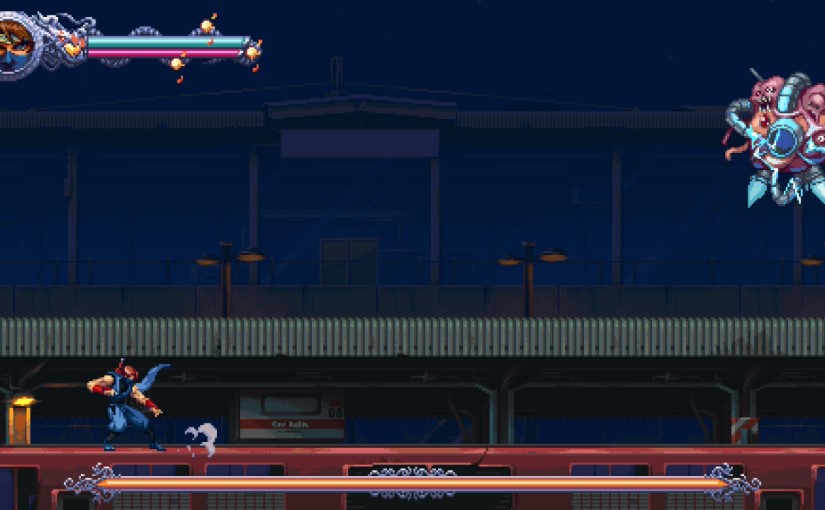
Ninja Gaiden: Ragebound is a decidedly old-school action platformer that plays like an updated version of the classic Ninja Gaiden games, and it’s definitely closer to its inspiration than Shinobi. Kenji can do two quick slashes with his sword, and can fling projectiles thanks to Kumori’s assistance. The pair have access to a few equippable special weapons and abilities, and can leap from enemies, projectiles, and certain pick-ups using a mid-air attack, which becomes very important for traversal and combat as the game progresses.
Most enemies fall in one hit, but others are much tougher and require Kenji to get up close and slash away, putting himself at risk of some health bar-sapping counter-attacks. However, there’s a nifty mechanic that can help to make these big boys and girls less of a pain. Certain enemies will have visible auras, and depending on whether you defeat them with the right kind of attack, Kenji can sap this aura, super-powering his next strike, which will make short work of the tougher enemies if you play it right. This mechanic also comes up during every boss fight, and it can feel pretty good when you take out a group of tough enemies or stun a boss thanks to smart use of the available auras.
Shinobi: Art of Vengeance feels much more modern and further away from the Shinobi games of old, with Joe Musashi gaining directional attacks, upgradeable combos, and a satisfying execution move. There’s a similar system of equippable items that have in-game effects, but I felt more compelled to experiment with different loadouts in Musashi’s outing. Art of Vengeance will also have players going back to earlier stages once new abilities have been unlocked in order to get to new areas, and as such it has a bit of a Metroidvania flavour. I’m a fan of the ways Lizardcube have expanded on the traditional gameplay, and it still feels like a Shinobi game despite these changes.
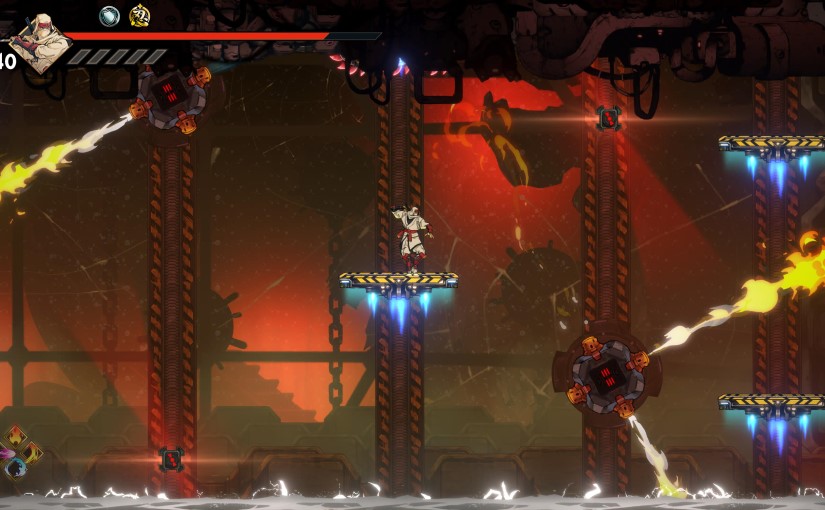
Shinobi: Art of Vengeance also has some devious platforming sections. I didn’t find the Ankou Rifts too bad (optional areas that provide combat or platforming challenges that provide Joe with a stronger weapon if you beat them all) but there were occasional optional areas in the main levels that slipped from challenging to aggravating. The most egregious example of this was a platforming section known as the “secret bunker” in the battlefield stage late in the game. That place was a nightmare, and was the only time I felt like the controls were working against me, but I beat it.
Both games have some really cool set-pieces, including levels based on moving trains, and “mounted” stages, with Shinobi having a mechanised surfboard interlude as well as another one that’s a slight spoiler, and Ninja Gaiden having a couple of sections on a scrambler bike belonging to Kumori. One later stage in Ninja Gaiden has Kenji leaping from vehicle to vehicle in a military convoy, which was a nice bit of spectacle.
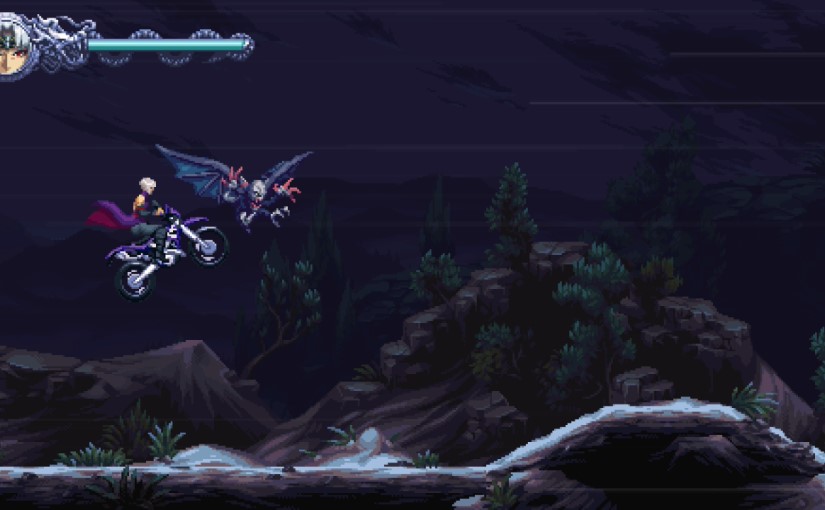
Lastly, I encountered glitches in both games. Ninja Gaiden: Ragebound had Kumori riding her motorcycle backwards after a collision in one of the on-wheels stages, which was a little confusing and immersion-breaking but didn’t hurt in the long run, but there was one instance of a section of a level starting with Kenji falling through the floor and dying, even when I restarted from the last checkpoint. I had to quit the game completely and restart the level from the beginning to get past it, which was annoying.
Shinobi: The Art of Vengeance hit me with a recurring glitch where the map screen wouldn’t correctly identify where Joe was in the stage, which actually proved to be a major setback when I was searching for the last few collectibles in a stage. Also annoying.
Both games are incredibly smooth and satisfying to play, though, and are challenging in such a way that rarely falls into frustration. However, due to the sheer spectacle and “cool” factor of Shinobi’s combat, I have to hand it to Joe.
Winner: Shinobi: Art of Vengeance
Lastability
Well, the campaign in Shinobi: Art of Vengeance is a lot longer. With the expansive, Metroidvania-lite levels and the backtracking Joe Musashi’s adventure will last you a fair bit longer if you’re the type to play through a campaign once and then move on. When the campaign is completed an arcade mode is unlocked where the goal is to finish each stage in a good time while locating all the collectibles and taking as little damage as possible (as well as finishing the boss off using the awesome execution mechanic). Attaining S rank is pretty challenging, and then when you add in the Ankou Rifts, an unlockable boss rush mode, and the optional secret boss, there’s plenty there for completionists to get on with.
Ninja Gaiden: Ragebound is a more focused experience, with the ranking mechanic applied from the beginning of the game. In my experience it was slightly easier to attain an S rank in Ninja Gaiden (depending on whether one of the stage’s challenges involved beating the boss without damage or something crazy like that), but I didn’t especially try for the S ranks in either game so I can’t speak with too much authority on it. Once the campaign is completed a hard mode is unlocked, and there are also secret ops missions which are challenging optional stages in the vein of Shinobi’s Ankou Rifts.
When it comes to sheer content, though, I’ve got to give this one to Mr. Musashi again.
Winner: Shinobi: Art of Vengeance
Overall
Well, it’s looking like a bit of a Shinobi whitewash at the moment, but that’s really not the case. Every single category was very close, especially the all-important playability category, and the relationship between Kenji and Kumori in Ninja Gaiden: Ragebound did add a lot of personality to win me over. Of course, Joe Musashi is a legend, and Kenji and Kumori are mere newcomers, but I really enjoyed their interactions and this iteration of Joe comes across as more of a personification of vengeance who says literally one word over the course of the entire game. That does give him a badass edge, though.
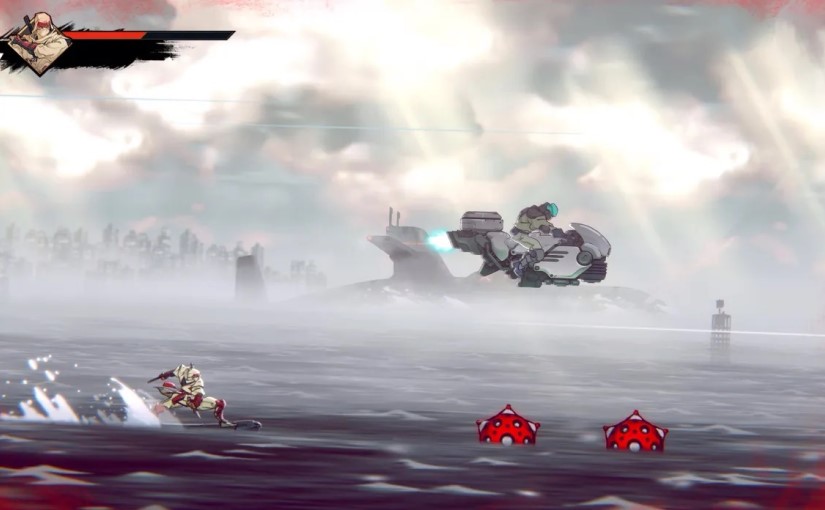
Like I said early on, both franchises mean a lot to me. I played and loved the Shinobi games as a kid on the Master System and Mega Drive, but I didn’t play any Ninja Gaiden games until the 2004 reboot and only played the classic games in retrospect. However, whereas I view the Shinobi games as great titles, 2004’s Ninja Gaiden is one of my favourite games of all time, so there’s no real favouritism here. Just based on how I feel about both games, though, I don’t think I can wrangle a plot twist and name Ninja Gaiden: Ragebound as the overall winner despite Shinobi taking most of the categories. It’s great, but Shinobi: Art of Vengeance just has that edge, a more palpable “cool” factor, and the combat is so darned satisfying.
Winner: Shinobi: Art of Vengeance
Really, though, both games are winners, and I’m just grateful to have had the opportunity to play two brand new 2D ninja action games here in 2025. Which ever game you choose to play you’re in for a fun and challenging time that has plenty of spectacular content to offer, and if you’ve got a few extra pennies, you could always double up. Support your local ninja in these trying times. Buy both!

















